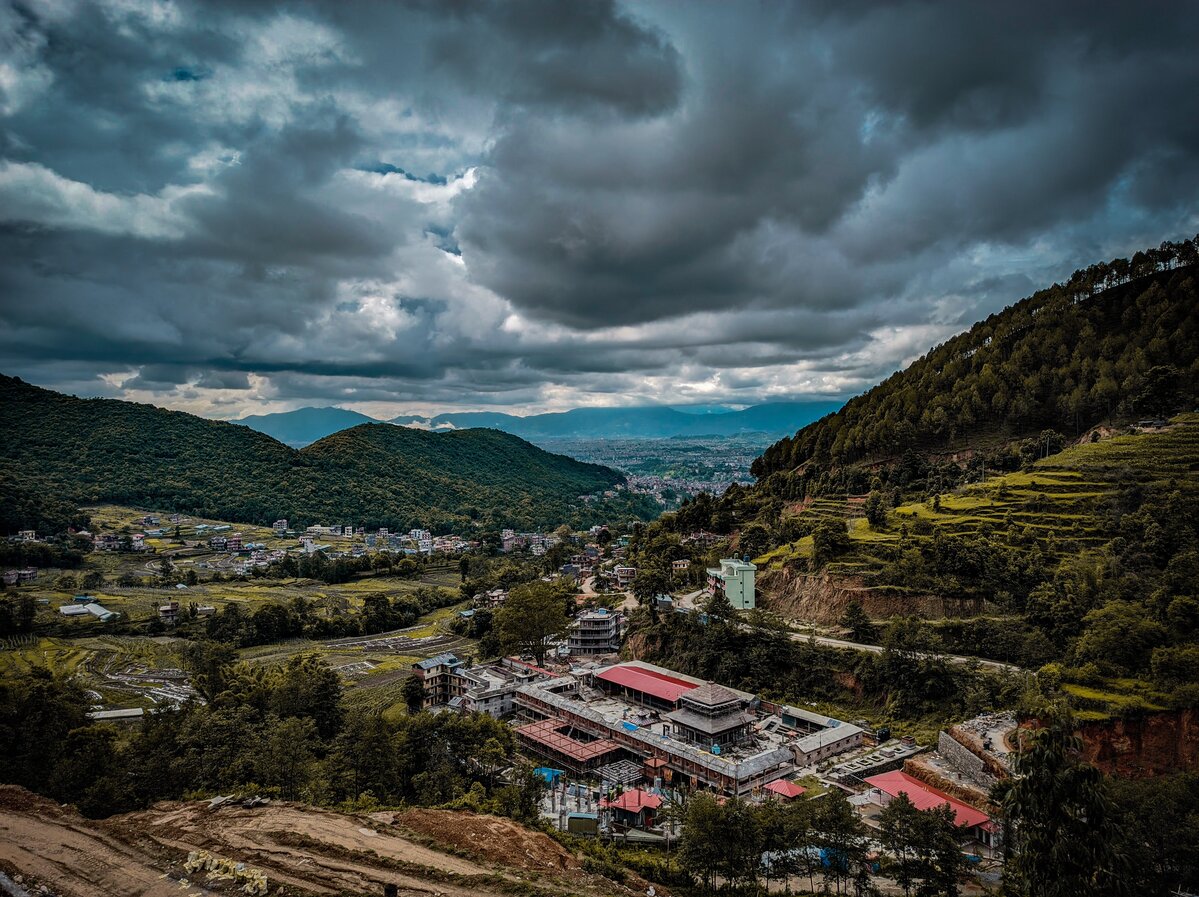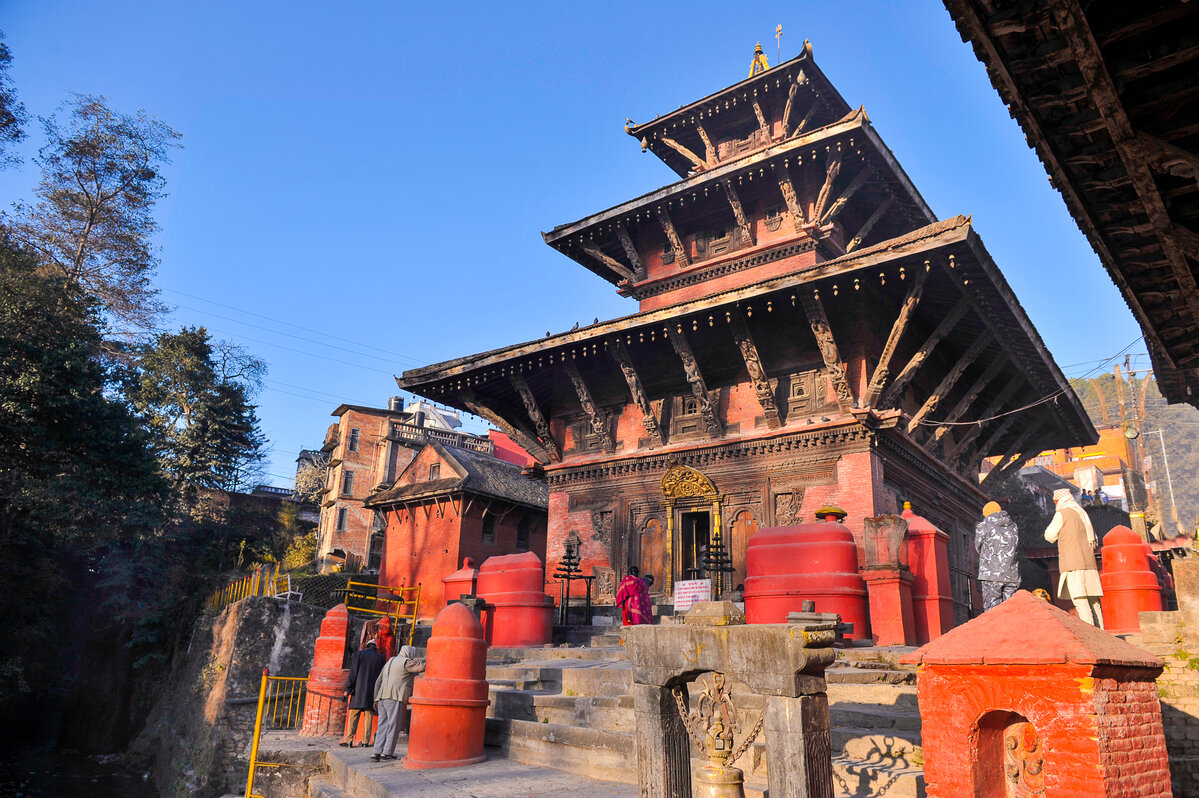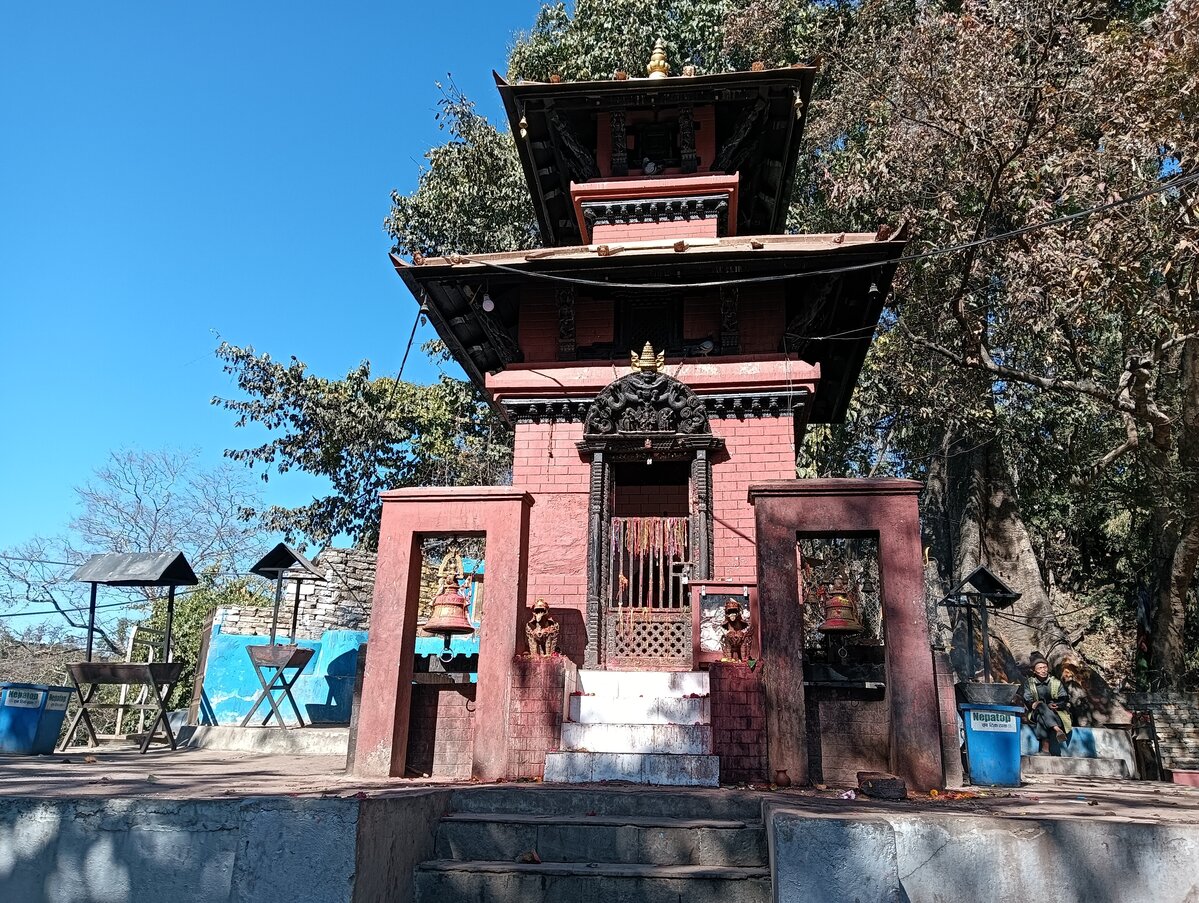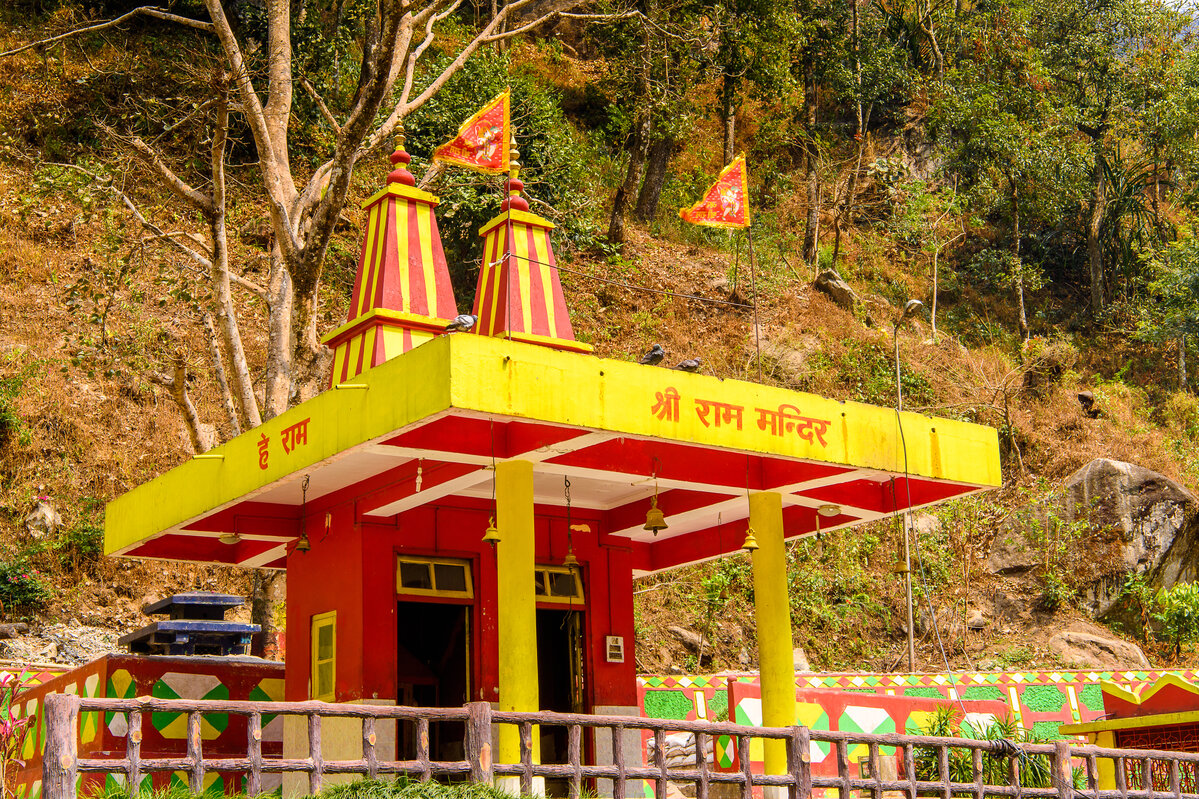July 29, 2025
6 Shiv Temples in Nepal you Must Visit in 2025
CM Content Team


View all
140+
Resorts
July 29, 2025
CM Content Team
Nepal is a spiritual sanctuary for Shiva devotees, home to some of the most revered Mahadev temples in the world. These sacred sites blend mythological legends, deep-rooted rituals, and the serenity of the Himalayas. From ancient cave temples to riverside shrines, each location offers a unique connection to Lord Shiva.
This blog explores six significant Shiv temples in Nepal and their divine significance. For pilgrims and spiritual travellers, resorts in Nepal like The Soaltee Kathmandu and Soaltee Westend Chitwan by Club Mahindra offer the perfect stay to complement this sacred journey.

Location: Kathmandu, on the banks of the Bagmati River
One of the most sacred Hindu shrines in the world, the Pashupatinath Temple stands as a monumental symbol of devotion and divinity in Nepal. Located in the capital city of Kathmandu, this UNESCO World Heritage Site is dedicated to Lord Shiva in his form as Pashupati, the "Lord of Beasts." It is believed to be one of the 12 Jyotirlingas, making it exceptionally significant in Hindu mythology.
Religious Significance: According to legend, Shiva once took the form of a deer and roamed freely in the nearby forest. The gods later recognized him and established this site as his sacred abode. The temple's golden pagoda-style roof, intricate wood carvings, and sprawling complex along the holy Bagmati River create an atmosphere of deep reverence and spiritual intensity. Pashupatinath is not just a temple but a living, breathing expression of Nepalese faith and cultural identity.
Why You Should Visit:
Best Time to Visit: February–March (Shivaratri), October–March (pleasant weather)
Temple Timings: 4 AM to 12 PM, 5 PM to 9 PM

Location: Bhaktapur, approximately 20 km from Kathmandu
Doleshwor Mahadev Temple is a revered Shiva shrine believed to be the head of the Kedarnath lingam in India. This temple has grown in prominence, especially after being officially recognized by priests from Kedarnath as part of the same divine manifestation. Surrounded by rolling hills and peaceful countryside, Doleshwor offers a serene yet spiritually charged atmosphere, perfect for reflection and devotion.
Religious Significance: According to legend, after the Kurukshetra war, the Pandavas sought Shiva’s blessings. Shiva, avoiding them, took the form of a bull and fled. While the body appeared in Kedarnath, the head is said to have surfaced here in Doleshwor centuries later.
Why You Should Visit:
Best Time to Visit: March–May, September–November
Temple Timings: 5 AM to 12 PM; 1 PM to 7 PM

Location: Gokarna Forest, northeastern Kathmandu
The Gokarneshwor Mahadev Temple is one of Kathmandu’s most peaceful Shiva shrines. The temple’s setting in a lush forest sanctuary adds to its spiritual charm. The soothing sounds of rustling leaves, chirping birds, and flowing water create an ambiance perfect for meditation and introspection. Pilgrims and locals alike come here seeking blessings, peace, and ancestral connection.
Religious Significance: Mythology narrates that Shiva, in his deer form, once wandered through this very forest. Today, the temple not only honors this legend but also serves as an important site for performing shraddha, ancestral rituals, especially during Gokarna Aunsi (Nepalese Father’s Day).
Why You Should Visit:
Best Time to Visit: August (Gokarna Aunsi), October–March
Temple Timings: 5 AM to 7 PM

Location: Khotang District, Eastern Nepal
One of the most mystical and interfaith pilgrimage sites in the country, Halesi Mahadev Temple is often referred to as the "Pashupatinath of Eastern Nepal." The temple complex features several lingams and chambers within its ancient cave walls, each symbolizing different aspects of divinity and spiritual awakening. Its remoteness adds to its mystique, attracting seekers who wish to combine devotion with a sense of adventure.
Religious Significance: This sacred cave shrine is believed to be where Shiva sought refuge from the demon Bhasmasur, who had received a destructive boon. The cave’s sanctity also extends beyond Hinduism as it's equally revered by Buddhists as Maratika Cave, a site where Guru Padmasambhava attained immortality, and by the indigenous Kirat people.
Why You Should Visit:
Best Time to Visit: February (Shivaratri), April–June, September–November
Temple Timings: 5 AM to 7 PM

Location: Near Dharan, Eastern Nepal
Nestled within the green hills near Dharan lies the Kirateshwar Mahadev Temple, dedicated to Lord Shiva in his unique tribal form as a Kirati warrior. Surrounded by forest and set against the backdrop of gently flowing streams, the temple exudes a peaceful, almost ethereal presence. The legends associated with this temple reflect Shiva’s dynamic forms, both fierce and compassionate and his ability to transcend caste and culture.
Religious Significance: Disguised as a Kirat hunter, Shiva tested Arjuna by creating an illusionary wild boar. A symbolic battle followed when both claimed the kill, leading Arjuna to realize the hunter was Mahadev himself. This episode symbolizes Shiva’s formlessness and his universal accessibility, making the temple deeply significant to the Kirat community and Hindu devotees alike.
Why You Should Visit:
Best Time to Visit: November (Bala Chaturdashi), year-round mild weather
Temple Timings: 7 AM to 9 PM

Location: Dharan, Sunsari District
Pindeshwor Temple enshrines a sacred swayambhu (self-manifested) Shiva lingam and holds deep ties to the revered Barahakshetra pilgrimage circuit. This serene temple has long been a site of meditation for sages and a place of devotion, especially during Shravan and on holy Mondays. With its tranquil setting, fragrant incense, and the sound of mantras echoing in the air, Pindeshwor offers a peaceful sanctuary for pilgrims seeking inner connection and spiritual renewal.
Religious Significance: The Pindeshwor Temple houses a swayambhu (self-manifested) Shiva lingam, believed to have emerged naturally from the earth. Linked to the sacred Barahakshetra region, the site is revered for its spiritual energy. Legends say sages meditated here, and devotees flock during Shravan and Maha Shivaratri, seeking blessings, peace, and spiritual fulfillment.
Why You Should Visit:
Best Time to Visit: March (Maha Shivaratri), July–September (Shravan)
Temple Timings: 5 AM to 7 PM.

To truly enjoy a spiritual journey through Nepal’s sacred Shiv temples, having a comfortable and well-located place to stay makes all the difference. Among the finest resorts in Nepal, Club Mahindra properties stand out for their ideal locations, warm hospitality, and thoughtful amenities tailored for spiritual travellers.
The Soaltee Kathmandu, a Club Mahindra affiliate, is perfectly positioned for those visiting temples like Pashupatinath, Doleshwor Mahadev, and Gokarneshwor. This premium resort in Nepal offers spacious, well-appointed rooms, top-tier dining options, wellness facilities, and an overall atmosphere of calm sophistication. It serves as a convenient and cozy base for anyone exploring the spiritual heart of Kathmandu.
For those journeying towards Eastern Nepal to visit sites like Halesi Mahadev, Kirateshwar Mahadev, or Pindeshwor Temple, the Club Mahindra Soaltee Westend Chitwan provides a peaceful retreat. This resort in Nepal offers cozy accommodations and immersive experiences that make the stay both comfortable and culturally enriching. As one of the more scenic resorts in Nepal, it’s an excellent choice for pilgrims looking to blend devotion with relaxation.
Nepal is more than a land of majestic mountains. It is a place where devotion, mythology, and divine energy come together. Temples like Pashupatinath and Halesi offer Shiva devotees powerful spiritual experiences rooted in legend and peace. Club Mahindra resorts in Nepal add comfort and care to your sacred journey, making every moment meaningful.
With a Club Mahindra Membership, you get access to 140+ resorts in India and abroad, perfect for combining spirituality with enriching travel experiences.
The Pashupatinath Temple in Kathmandu is the most famous and revered Shiva temple in Nepal, attracting devotees from across the world.
No, Indian citizens do not need a visa to enter Nepal. Travel is visa-free with valid government-issued identification.
The ideal time is from October to March, when the weather is pleasant and many religious festivals take place.
Pashupatinath Temple is approximately a 20-minute drive from The Soaltee Kathmandu, one of the best-located resorts in Nepal.
Yes, with good planning, a week-long itinerary can cover major temples such as Pashupatinath, Doleshwor, Halesi, and more.
Most temples are accessible, though some like Halesi Mahadev may involve a moderate trek or steps.
The Soaltee Kathmandu is ideal for temple-focused travel, offering elegance, convenience, and access to multiple shrines.
Mahindra Holidays & Resorts India Ltd. (MHRIL), a part of Leisure and Hospitality sector of the Mahindra Group, offers quality family holidays primarily through vacation ownership memberships and brings to the industry values such as reliability, trust and customer satisfaction. Started in 1996, the company's flagship brand ‘Club Mahindra’, today has over 300,000 members , who can holiday at 140+ resorts in India and abroad.
We use cookies to personalise content and to provide you with an improved user experience.By Continuing to browse this site you consent to the use of cookies.Please visit our cookie policy for further details.

Welcome to ClubMahindra.com In order to provide a personalised experience for you, we use cookies to enable some website functionality. Cookies help us see which articles most interest you; allow you to easily share articles on social media channels; permit us to deliver content personalised to your interests and locations; along with many other site benefits. For more information, please review our Cookie Policy
When you visit any website, it may store or retrieve information on your browser, mostly in the form of cookies. This information might be about you, your preferences or your device and is mostly used to make the site work as you expect it to. The information does not usually directly identify you, but it can give you a more personalized web experience. Because we respect your right to privacy, you can choose not to allow some types of cookies. Click on the different category headings to find out more and change our default settings. However, blocking some types of cookies may impact your experience of the site and the services we are able to offer.
Because we respect your right to privacy, you can choose not to allow some types of cookies and you have the right to withdraw your consent by send a mail to email id [email protected]
These cookies are essential in order to enable you to move around the site and use its features, such as accessing secure areas of the site. Without these cookies, services you have asked for cannot be provided.
These cookies allow us to employ data analytics so we can measure and improve the performance of our site and provide more relevant content to you. These cookies don't collect information that identifies a visitor down to an individual level that is available to us. These cookies are not passing personally identifiable information to any external third party other than in limited cases when we engage a service provider to act on our behalf but who is then unable to use the data for their own purposes.
Performance cookies are generally third-party cookies from vendors we work with or who work on our behalf that collect information about your visit and use of the Club Mahindra website, for instance which pages you visit the most often, and if you get error messages from web pages. These cookies don't collect information that identifies a visitor. All information these cookies collect is anonymous and is only used to improve your overall experience on how the website works. Third party vendors may have access to this data and may use it to improve their overall services and offerings.
Functionality cookies allow a site to remember choices you make (such as your user name, language or the region you are in) and provide more enhanced, personal features. These cookies cannot track your browsing activity on other websites. They don't gather any information about you that could be used for advertising or remembering where you've been on the Internet outside our site.
Third-party advertising and social media cookies are used to (1) deliver advertisements more relevant to you and your interests; (2) limit the number of times you see an advertisement; (3) help measure the effectiveness of the advertising campaign; and (4) understand people's behaviour after they view an advertisement. They are usually placed on behalf of advertising networks with the site operator's permission. They remember that you have visited a site and quite often they will be linked to site functionality provided by the other organization. This may impact the content and messages you see on other websites you visit. If you do not allow these cookies you may not be able to use or see certain these sharing tools content on our website.